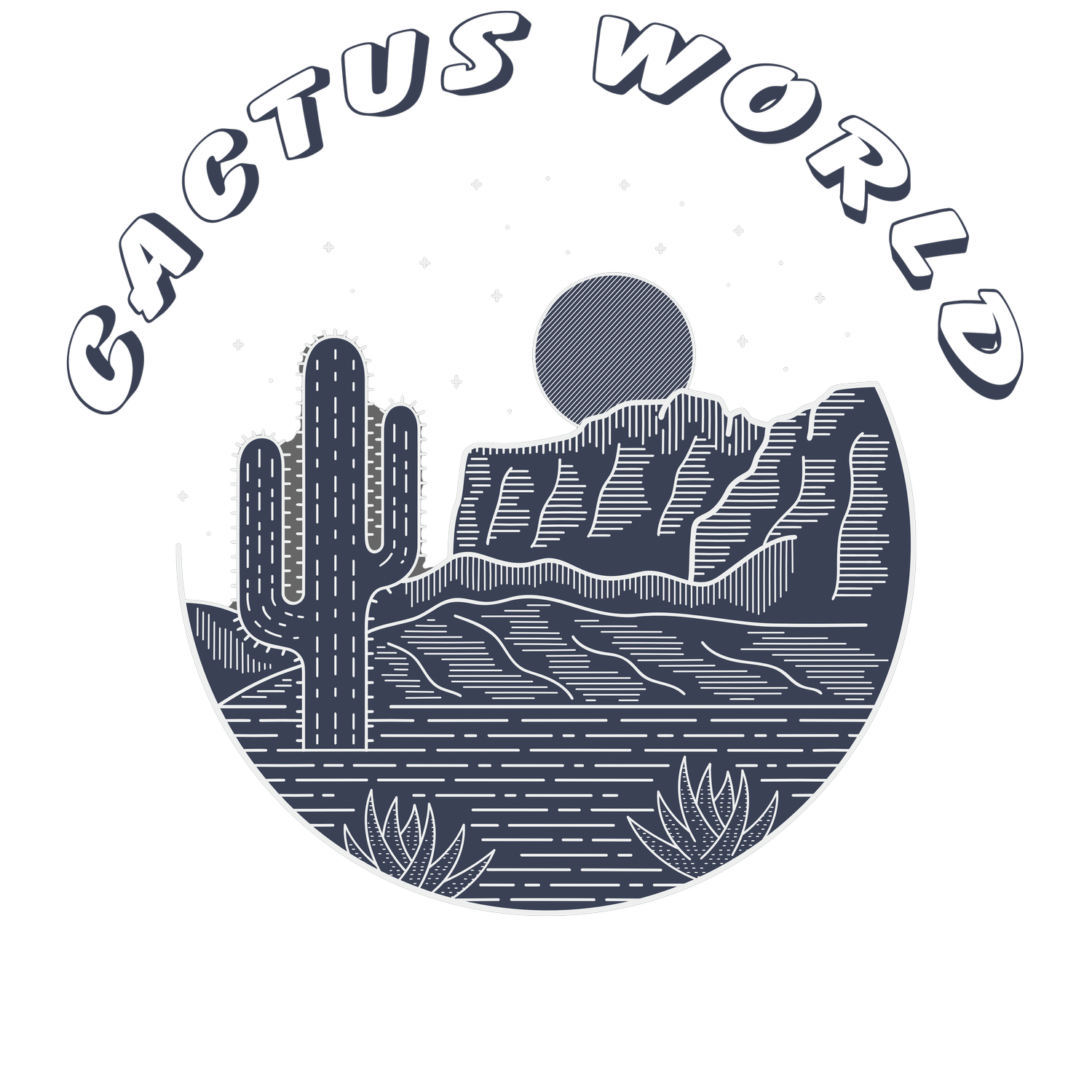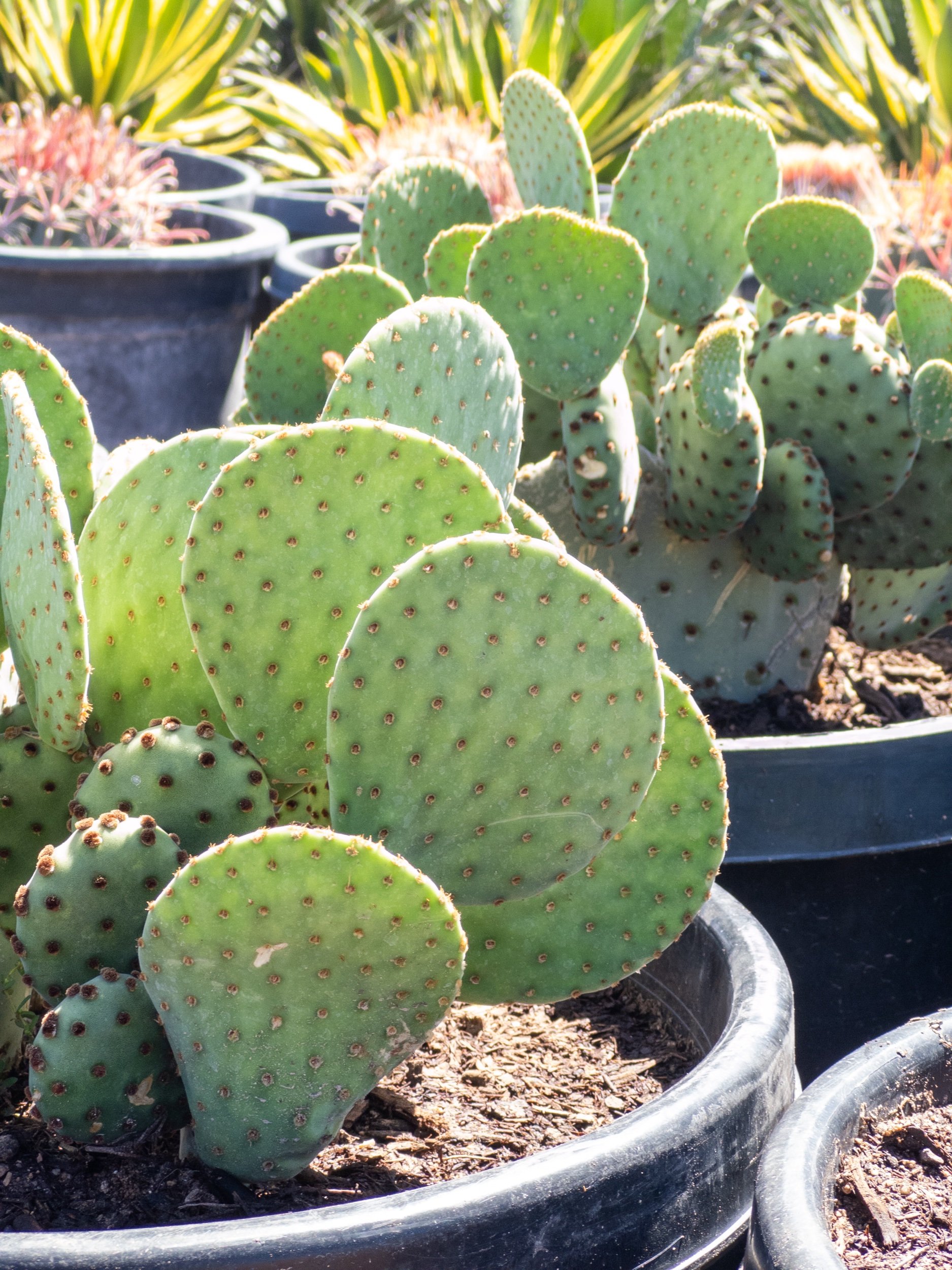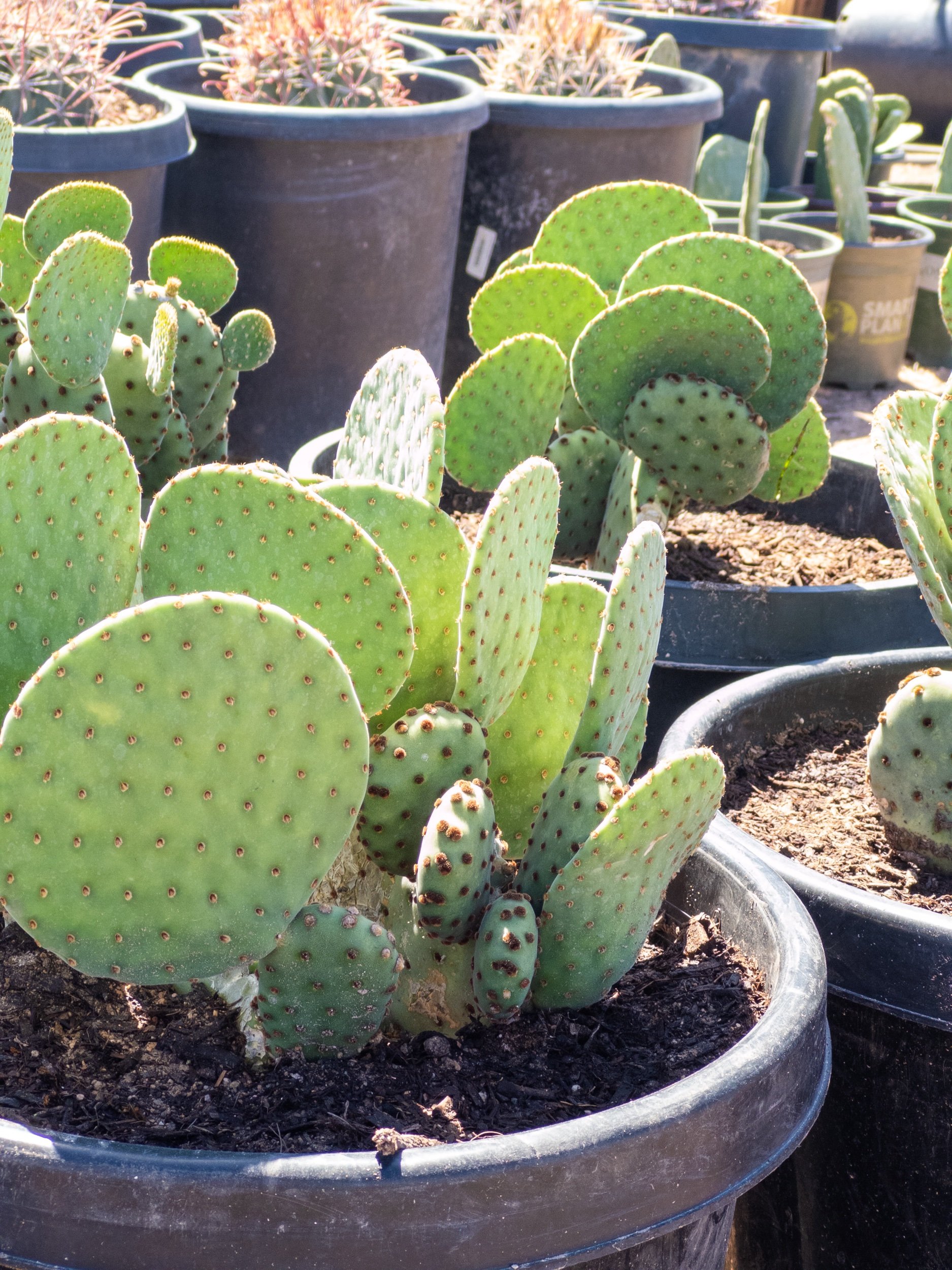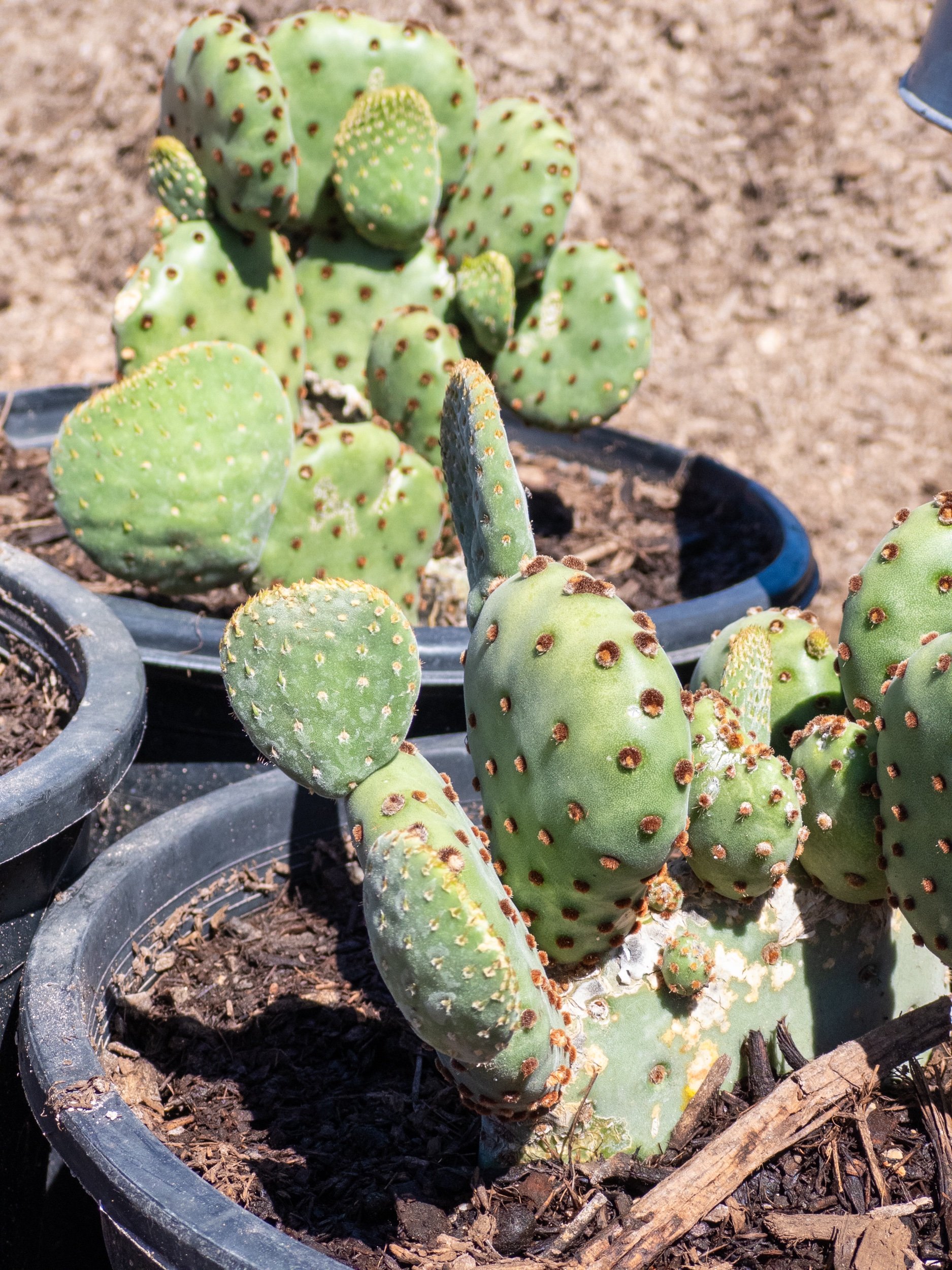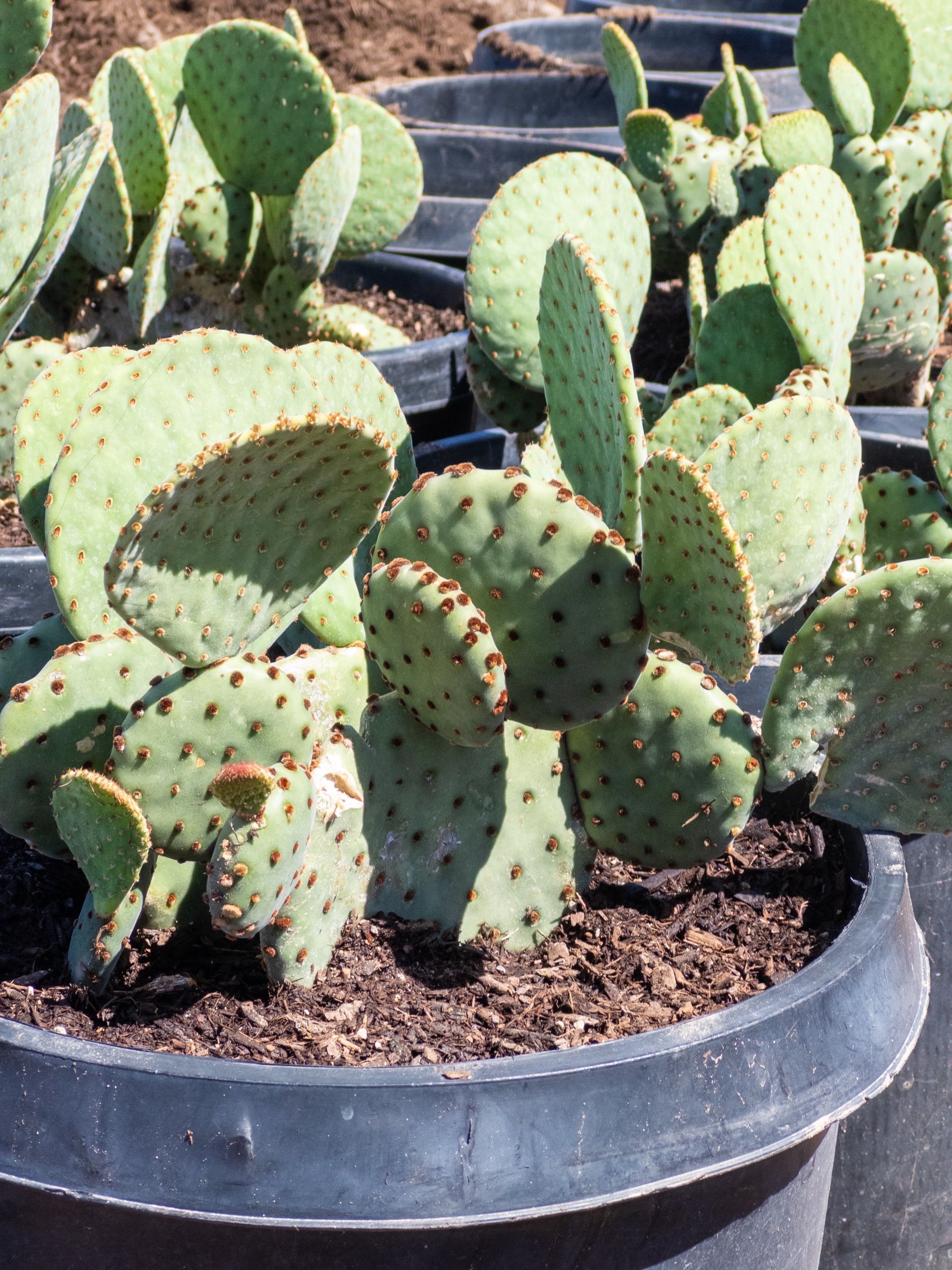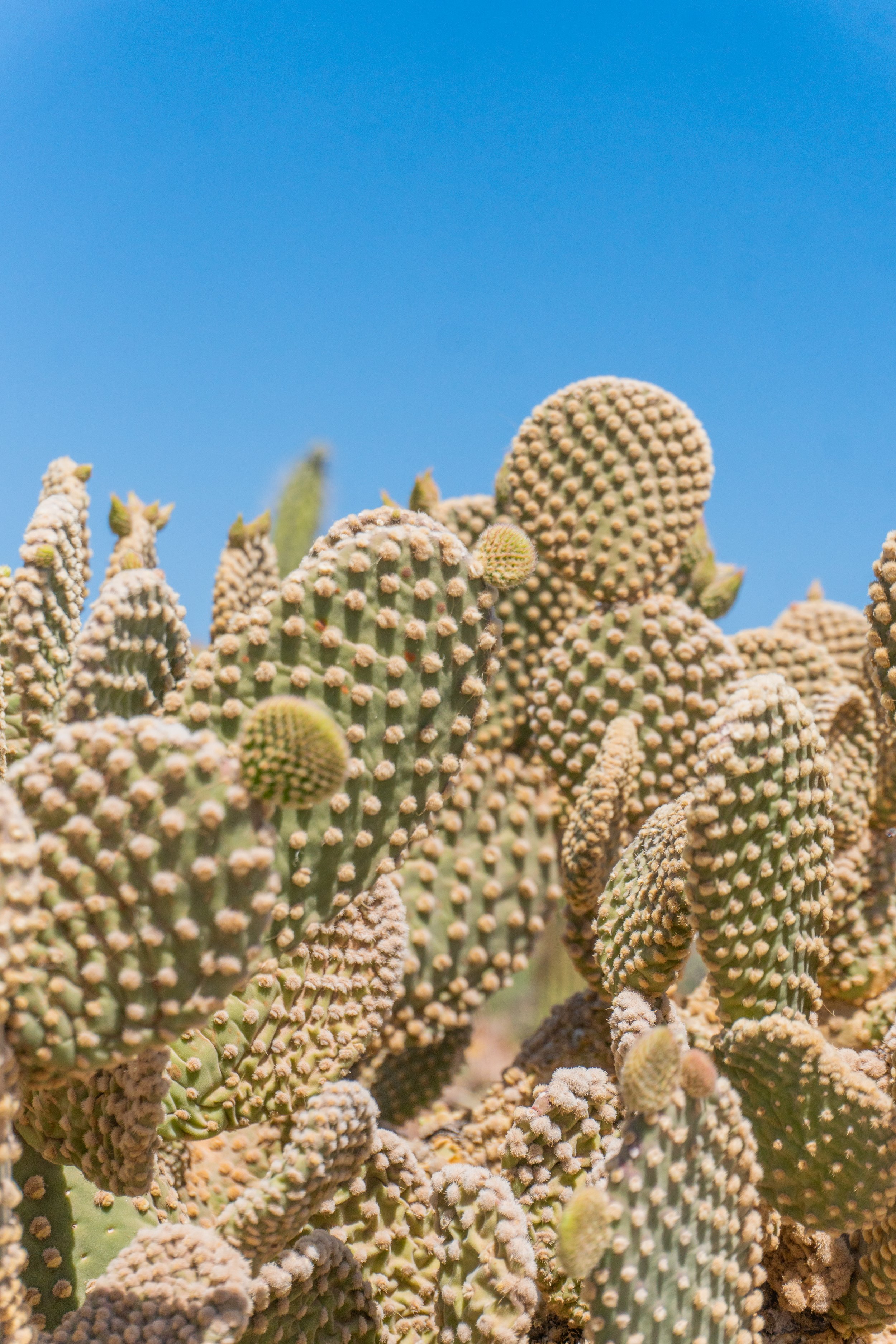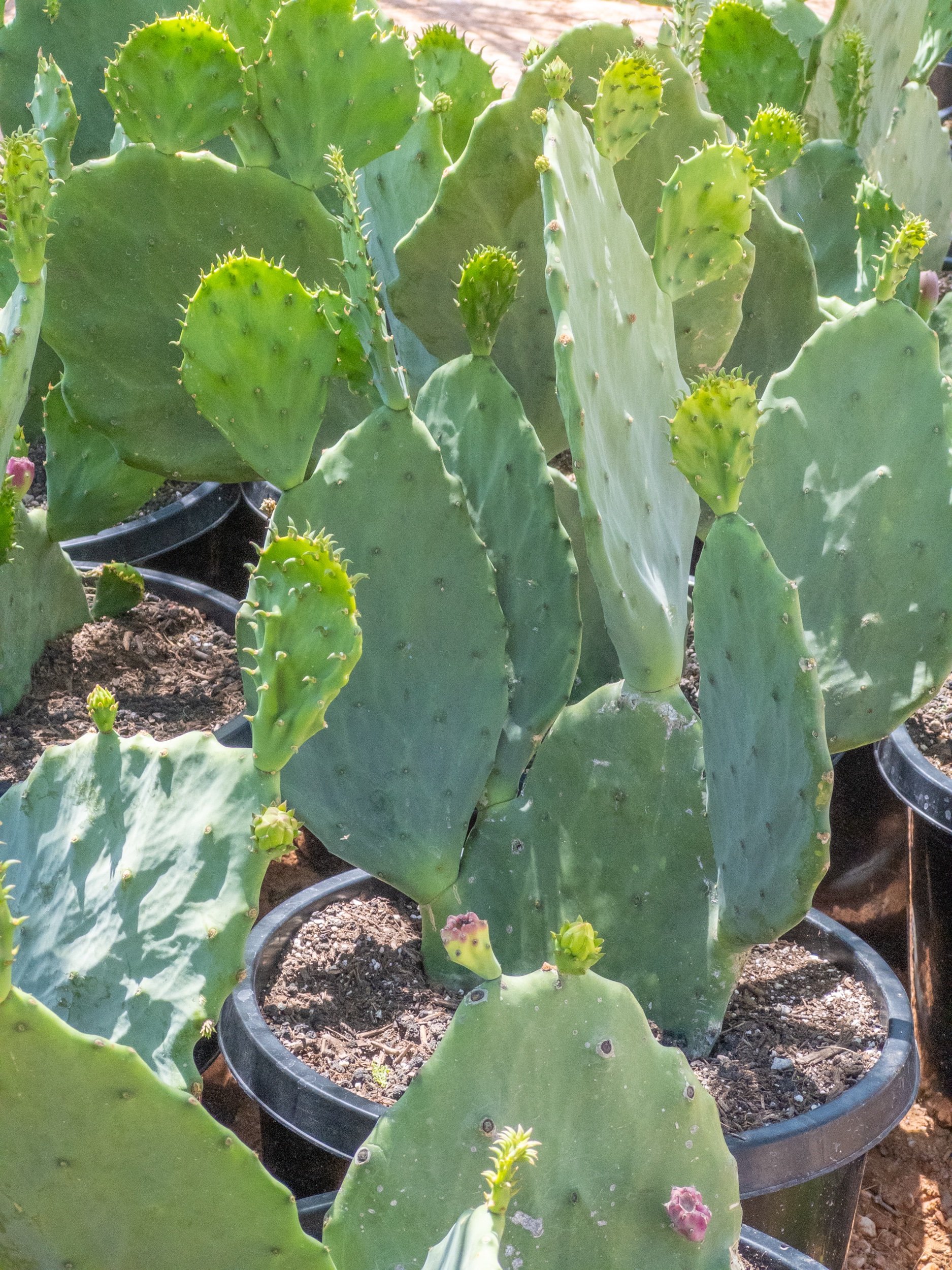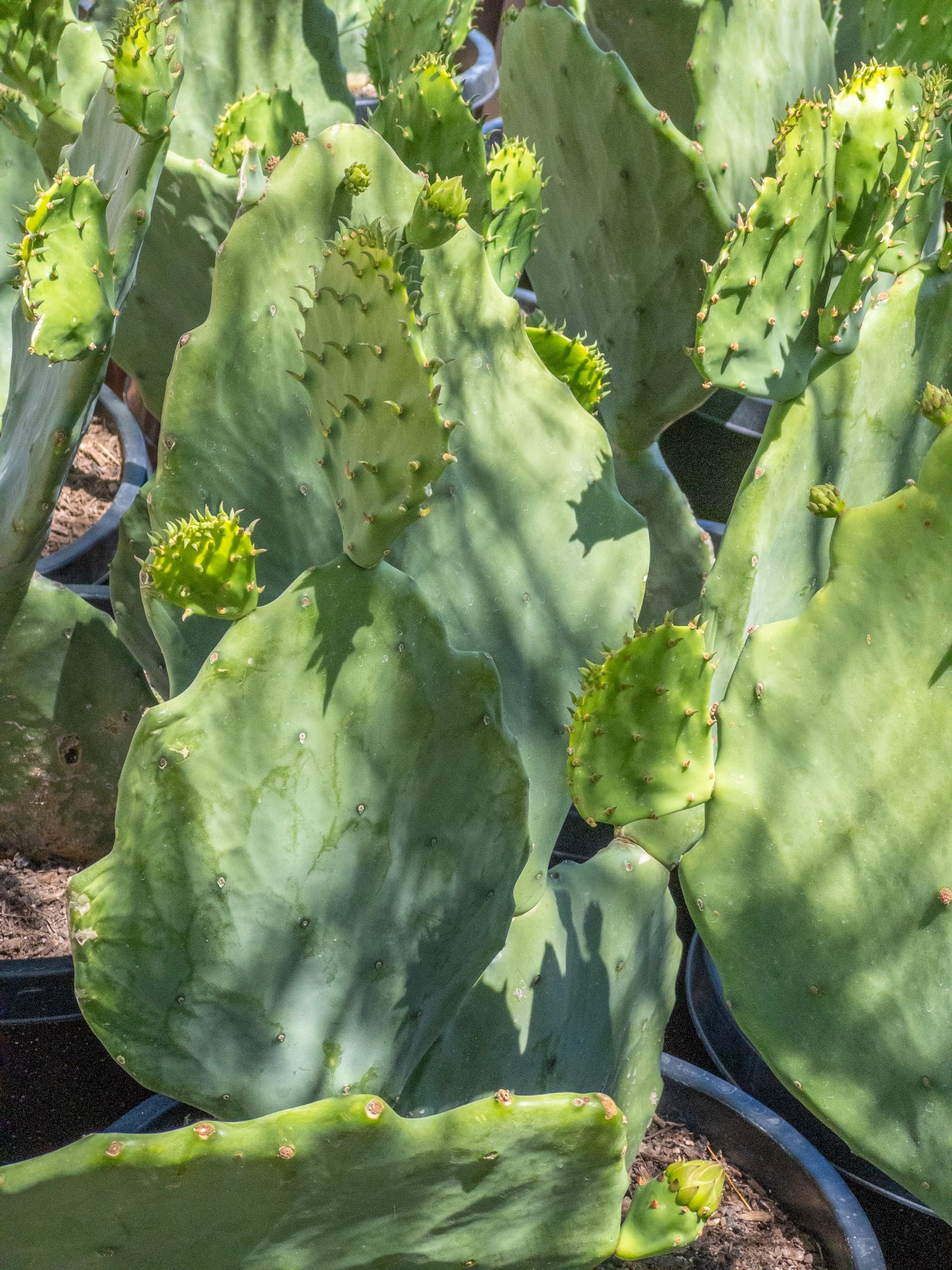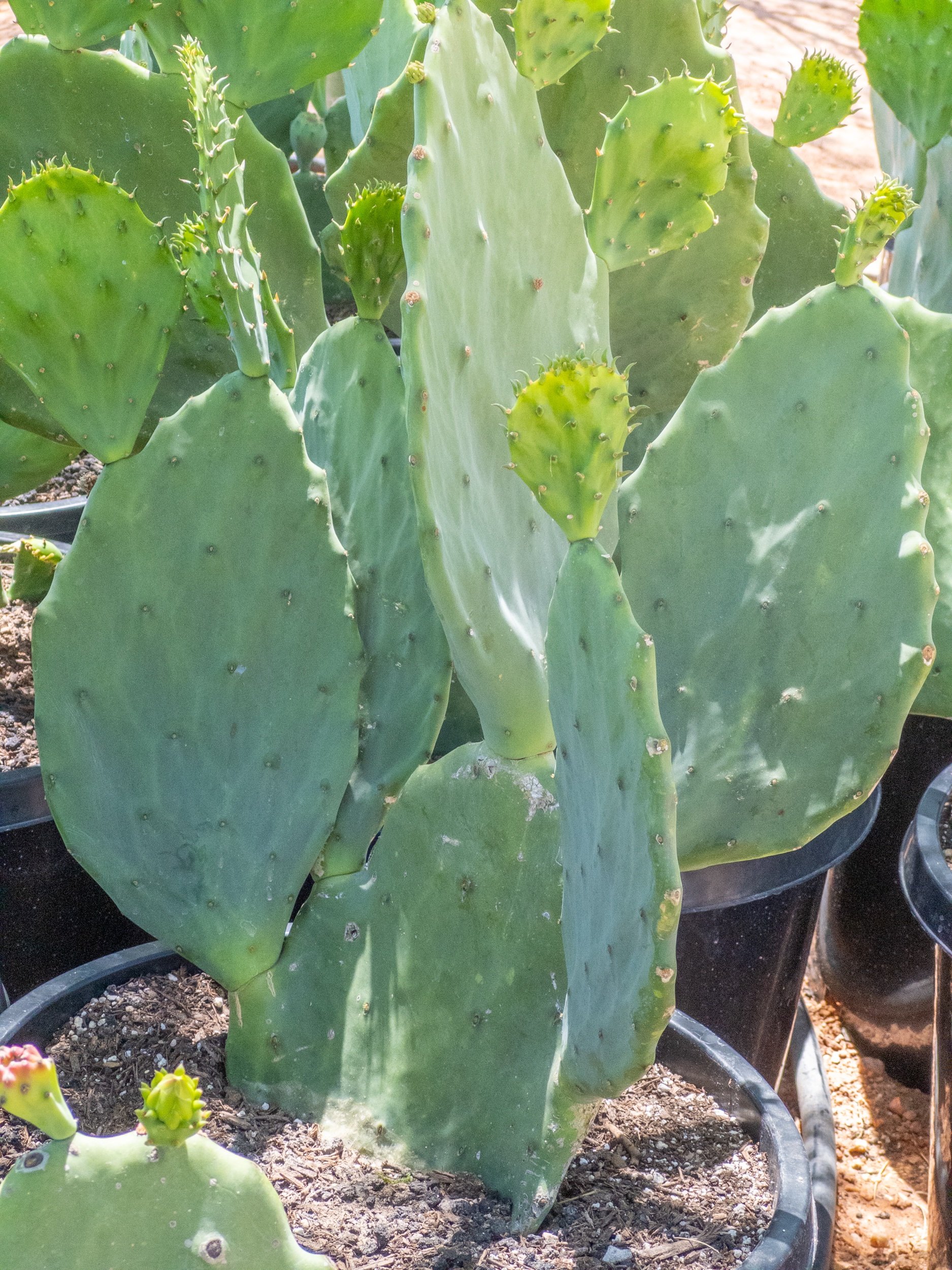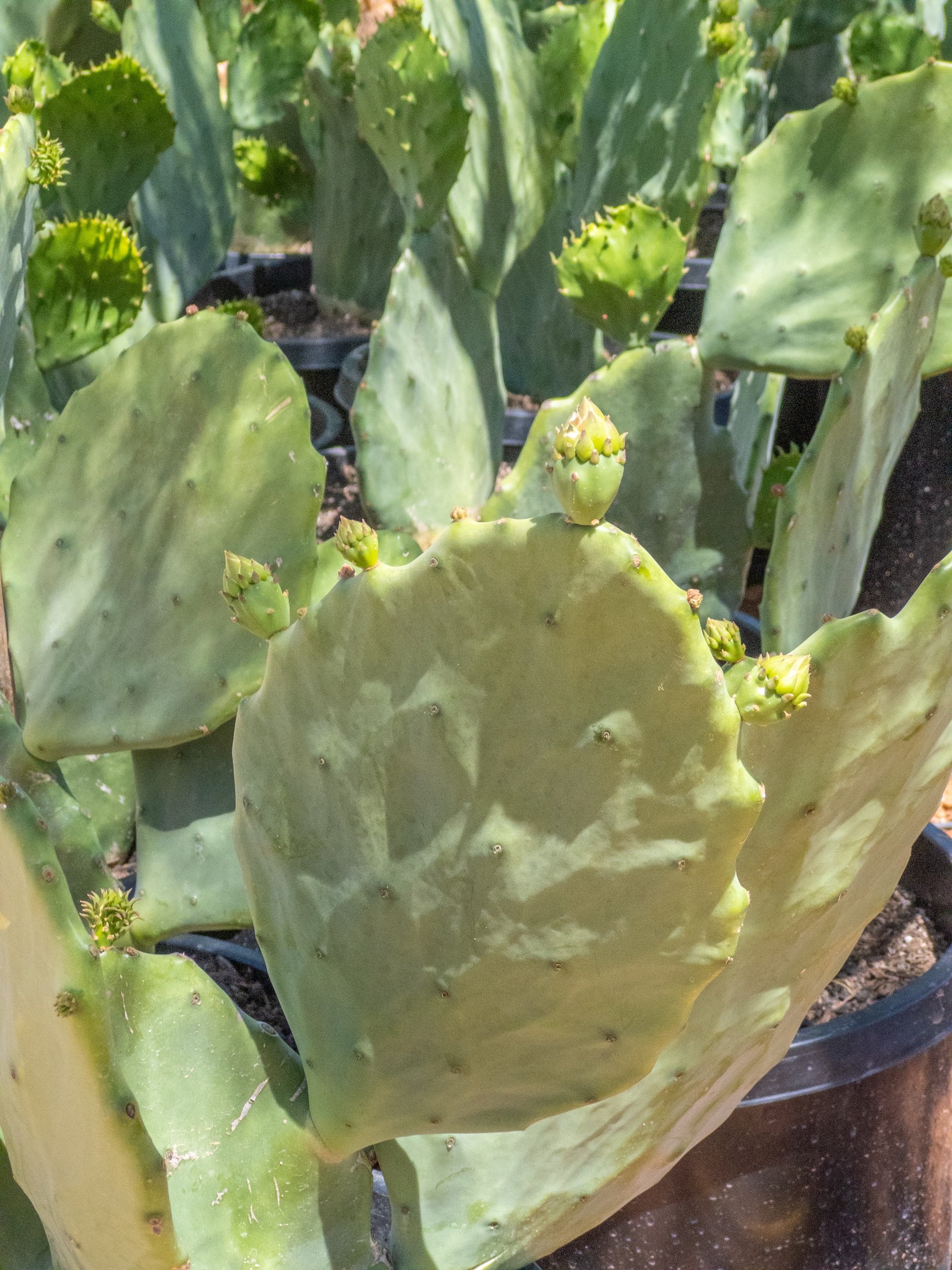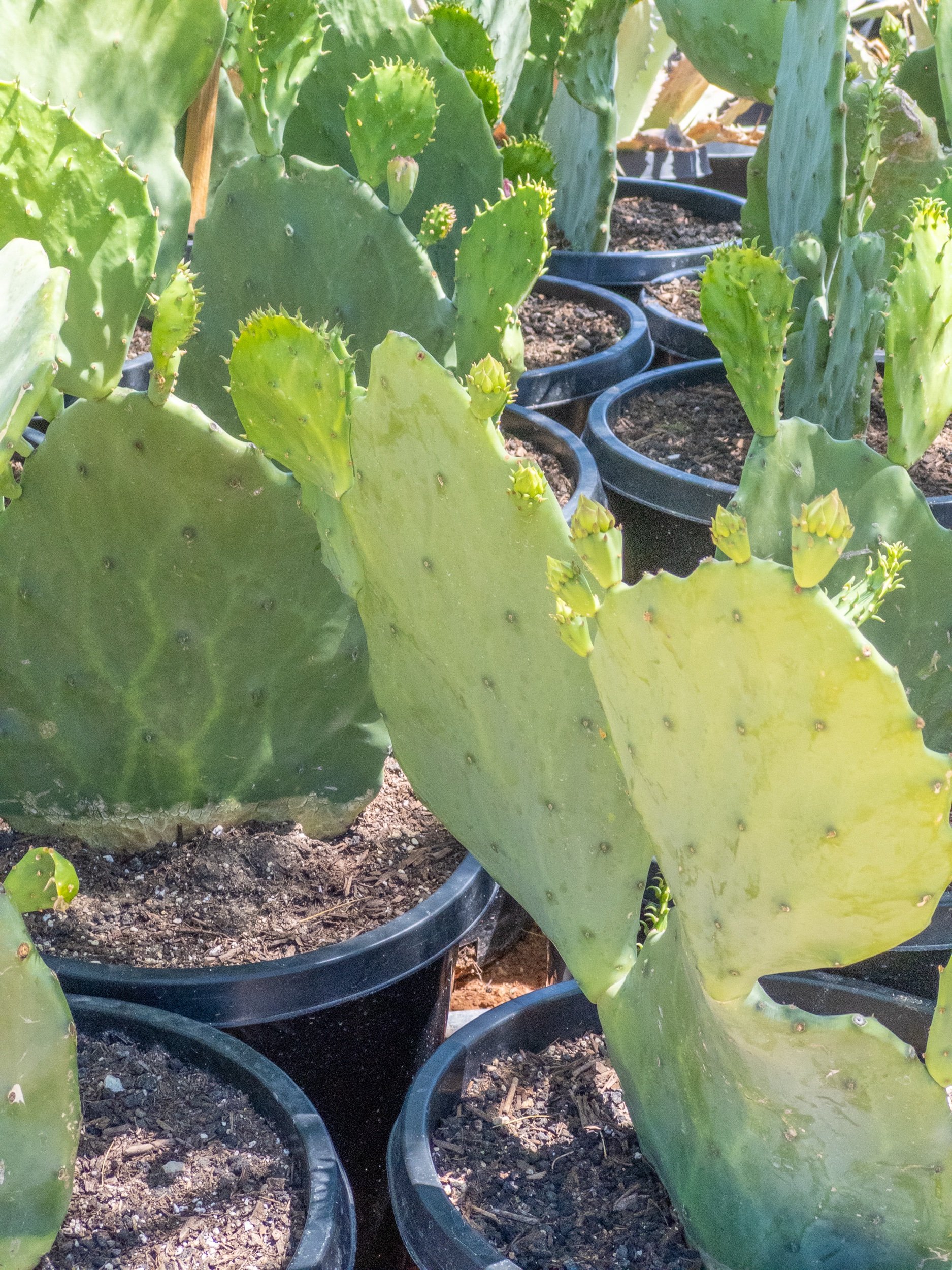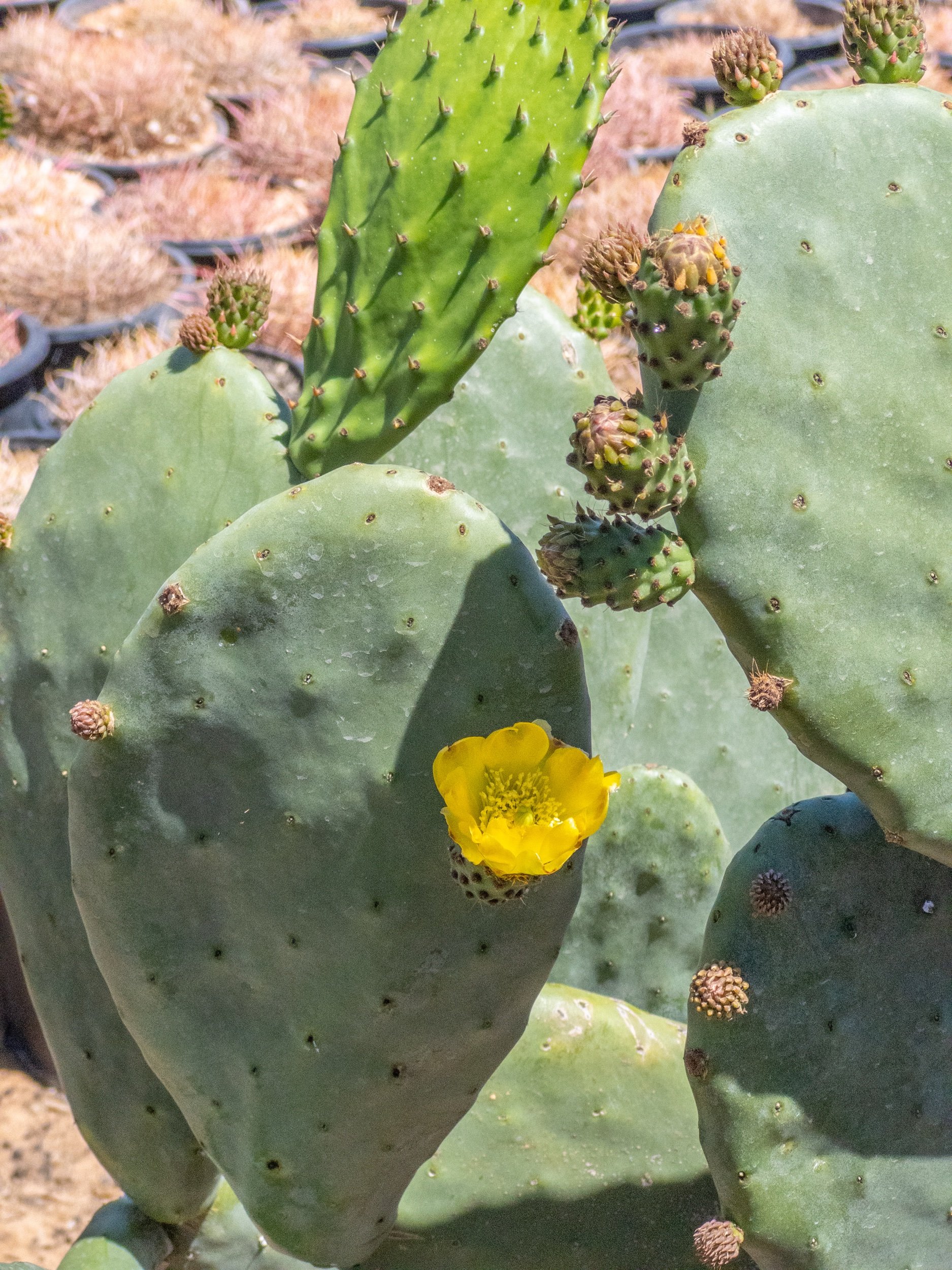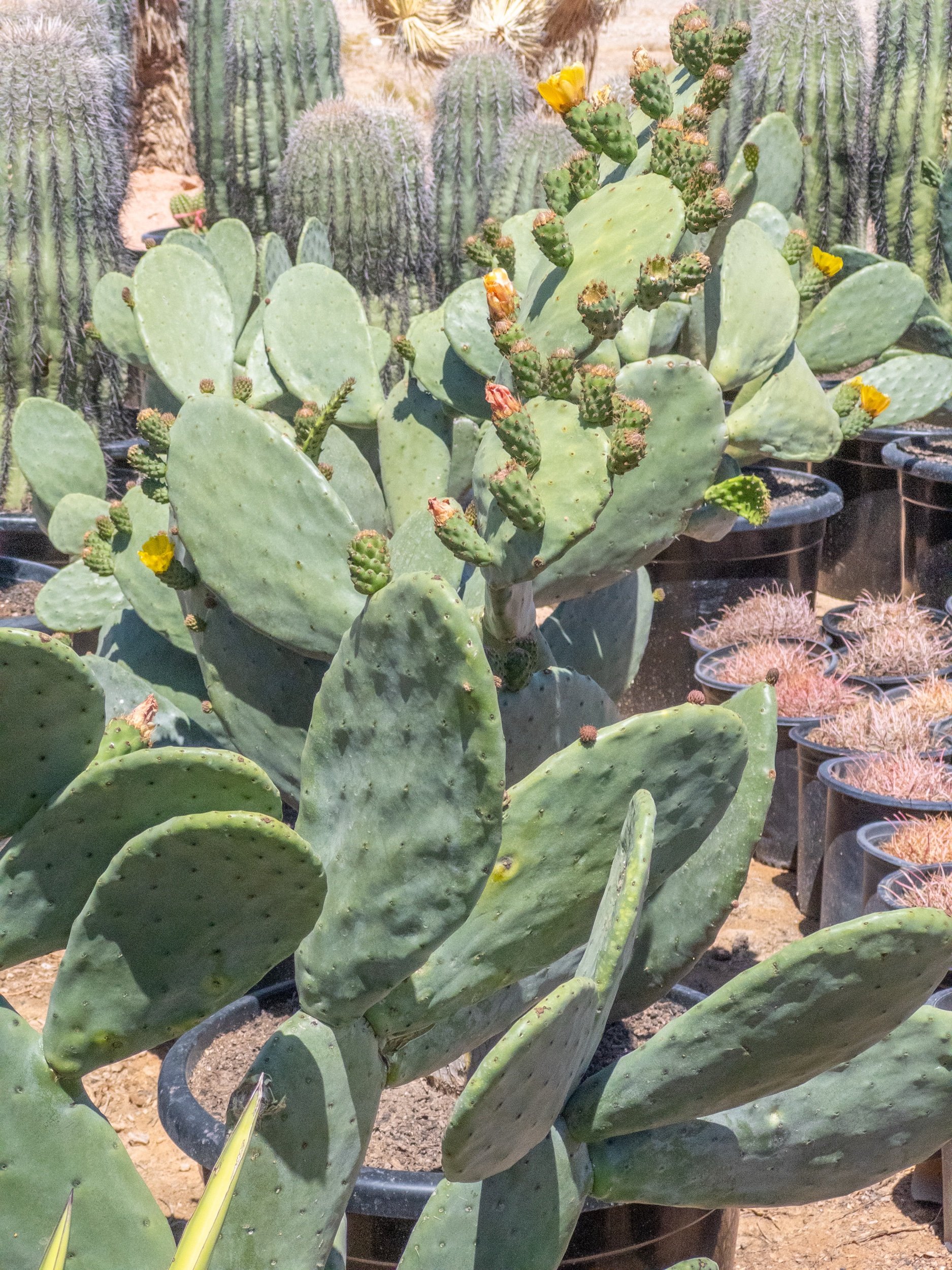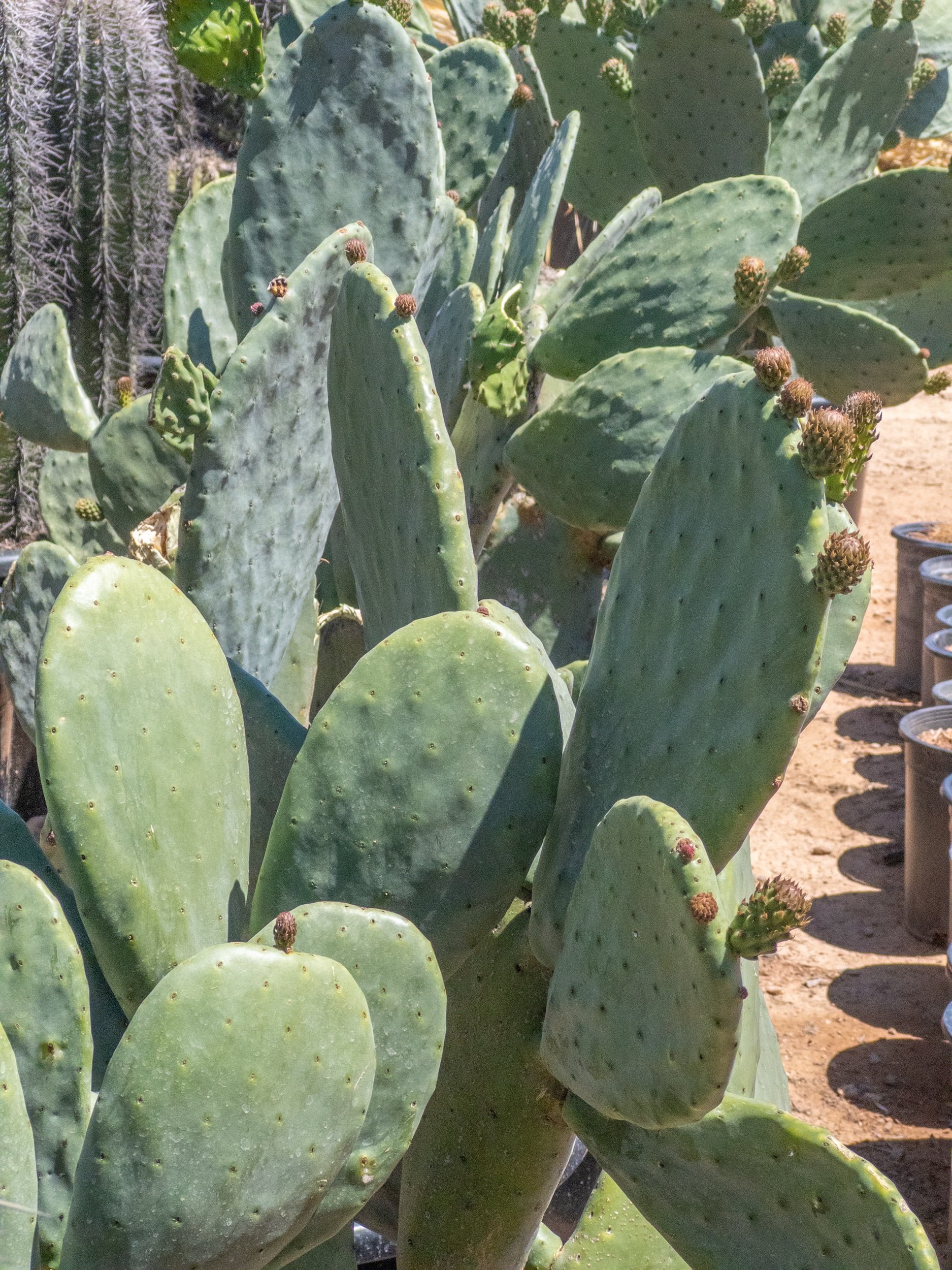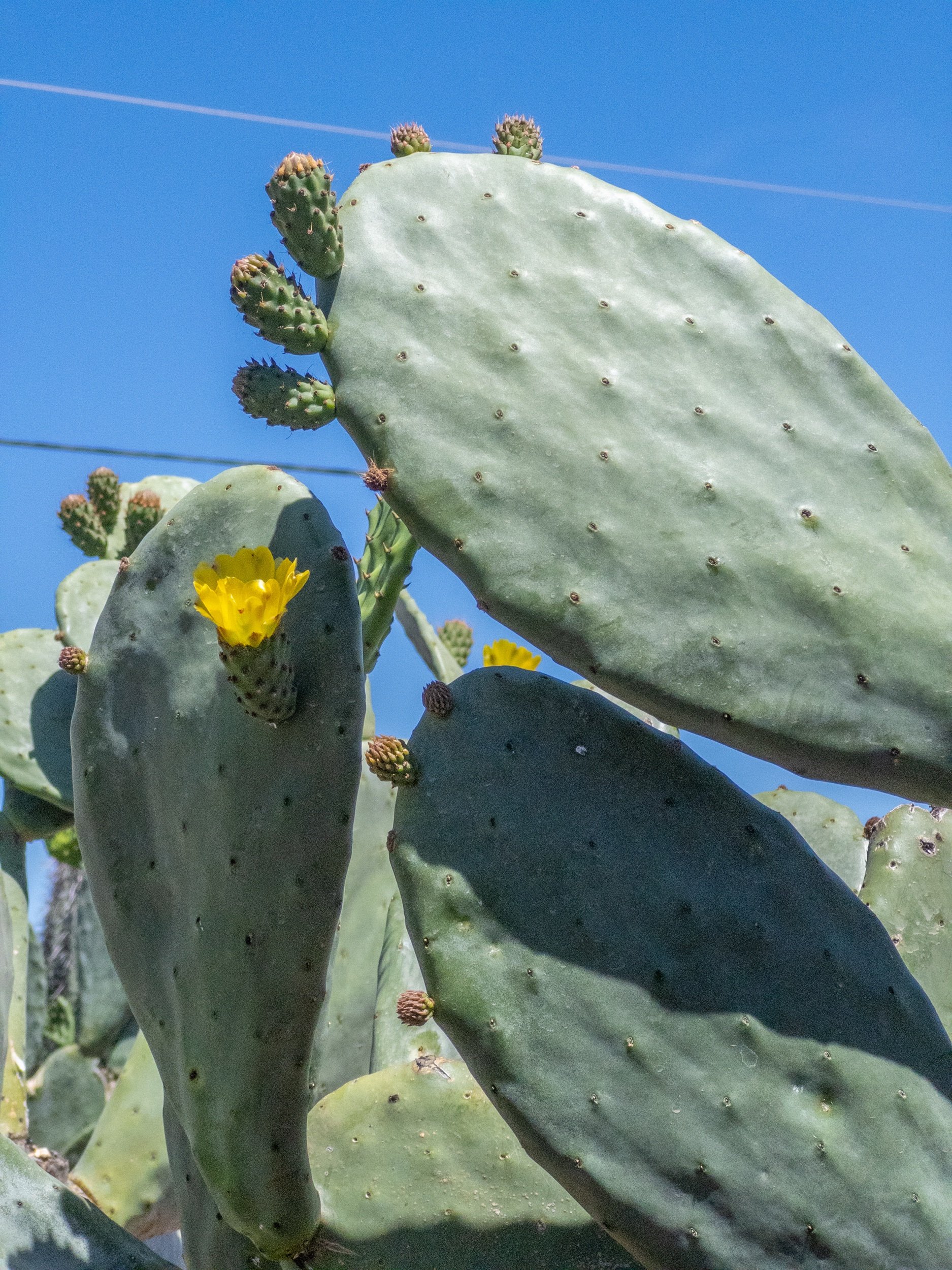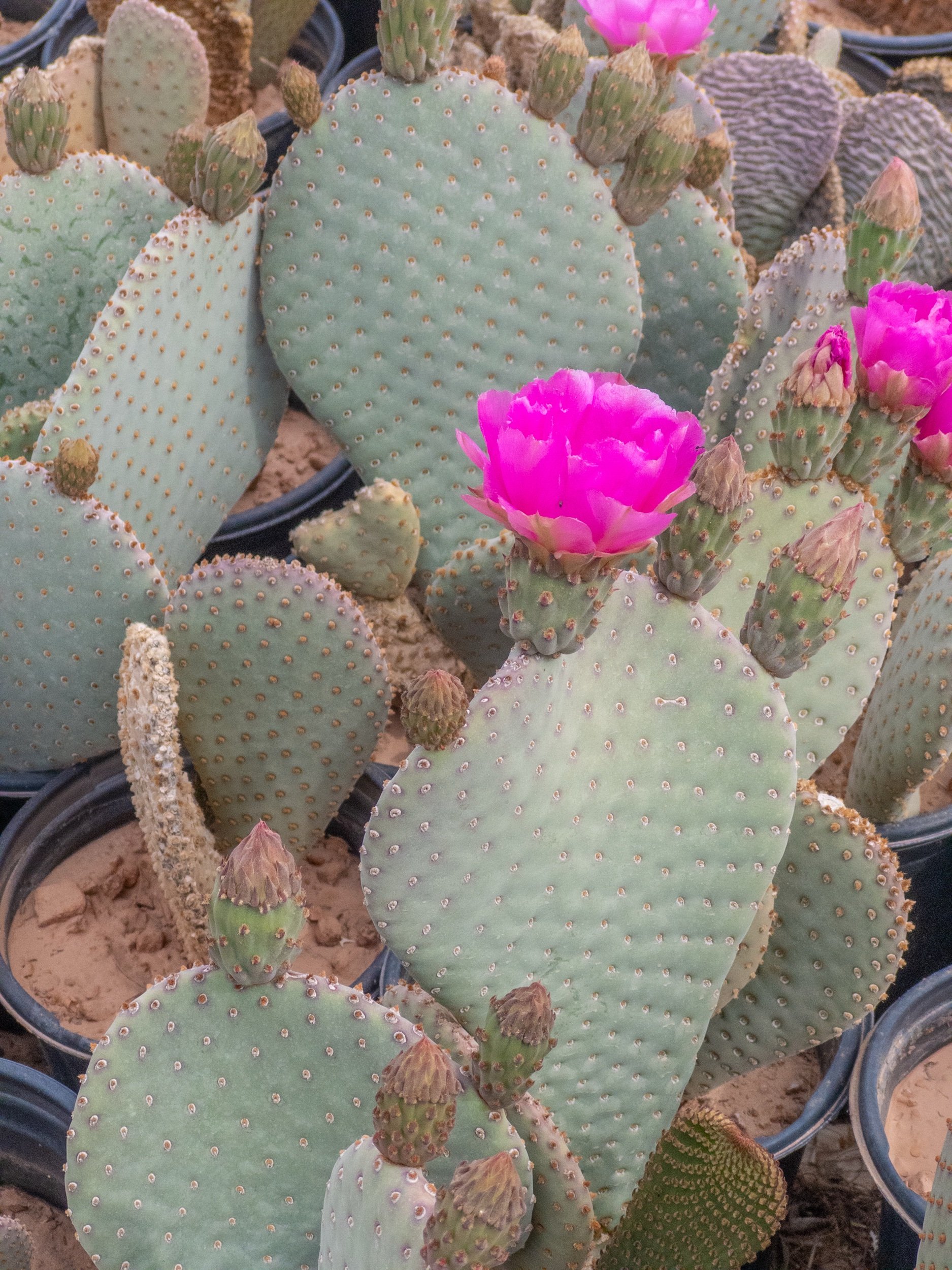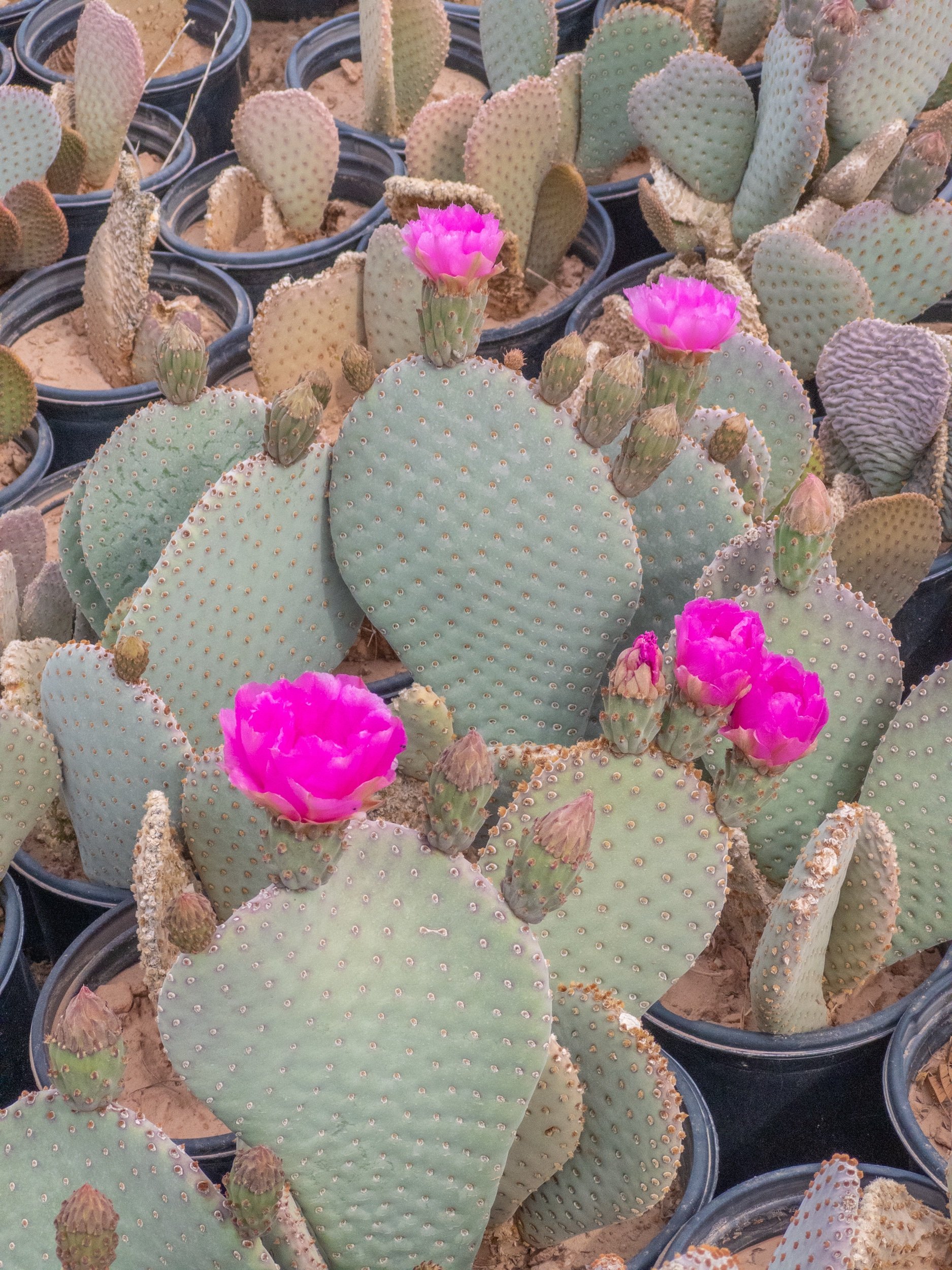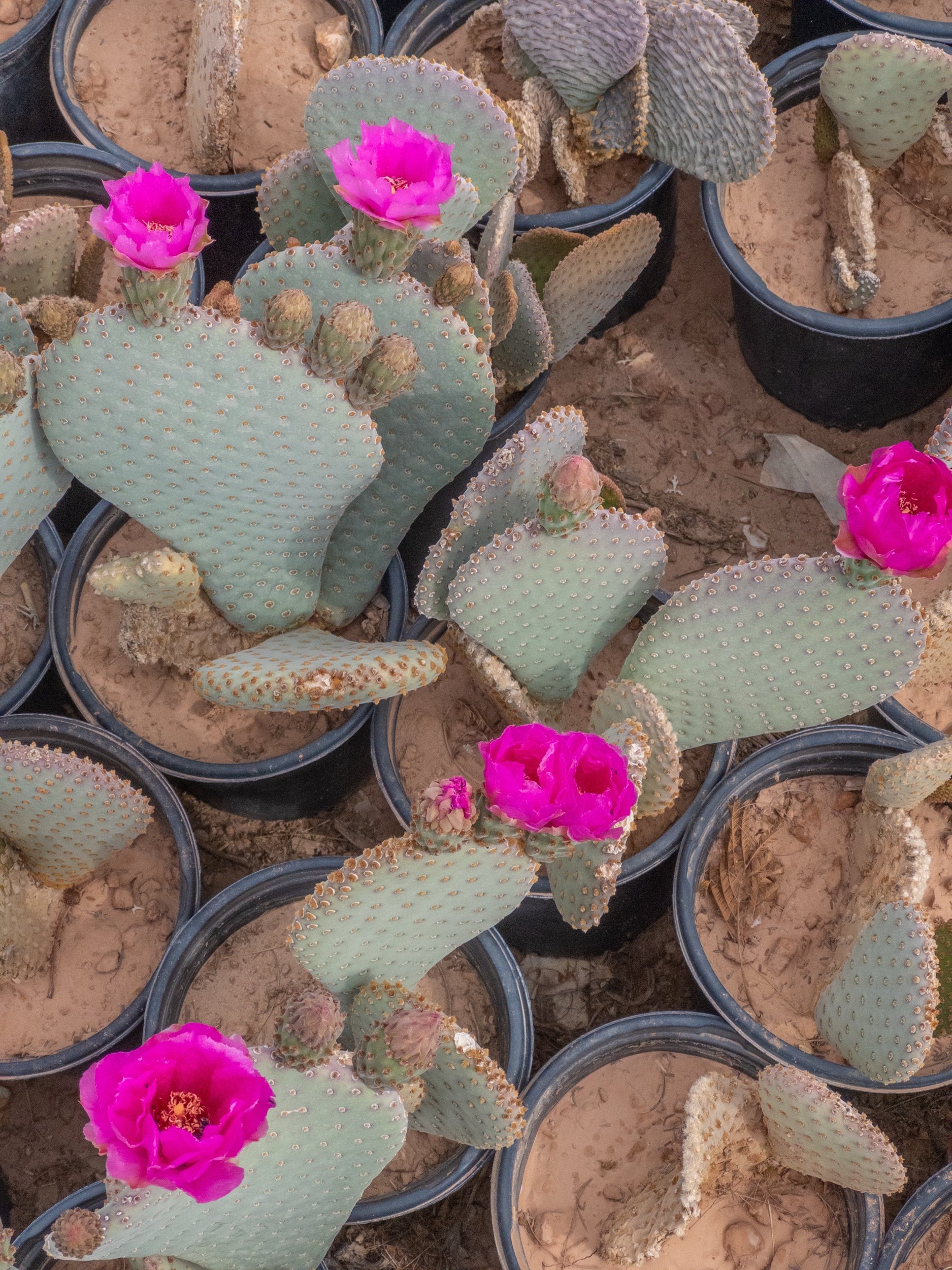 Image 1 of 6
Image 1 of 6

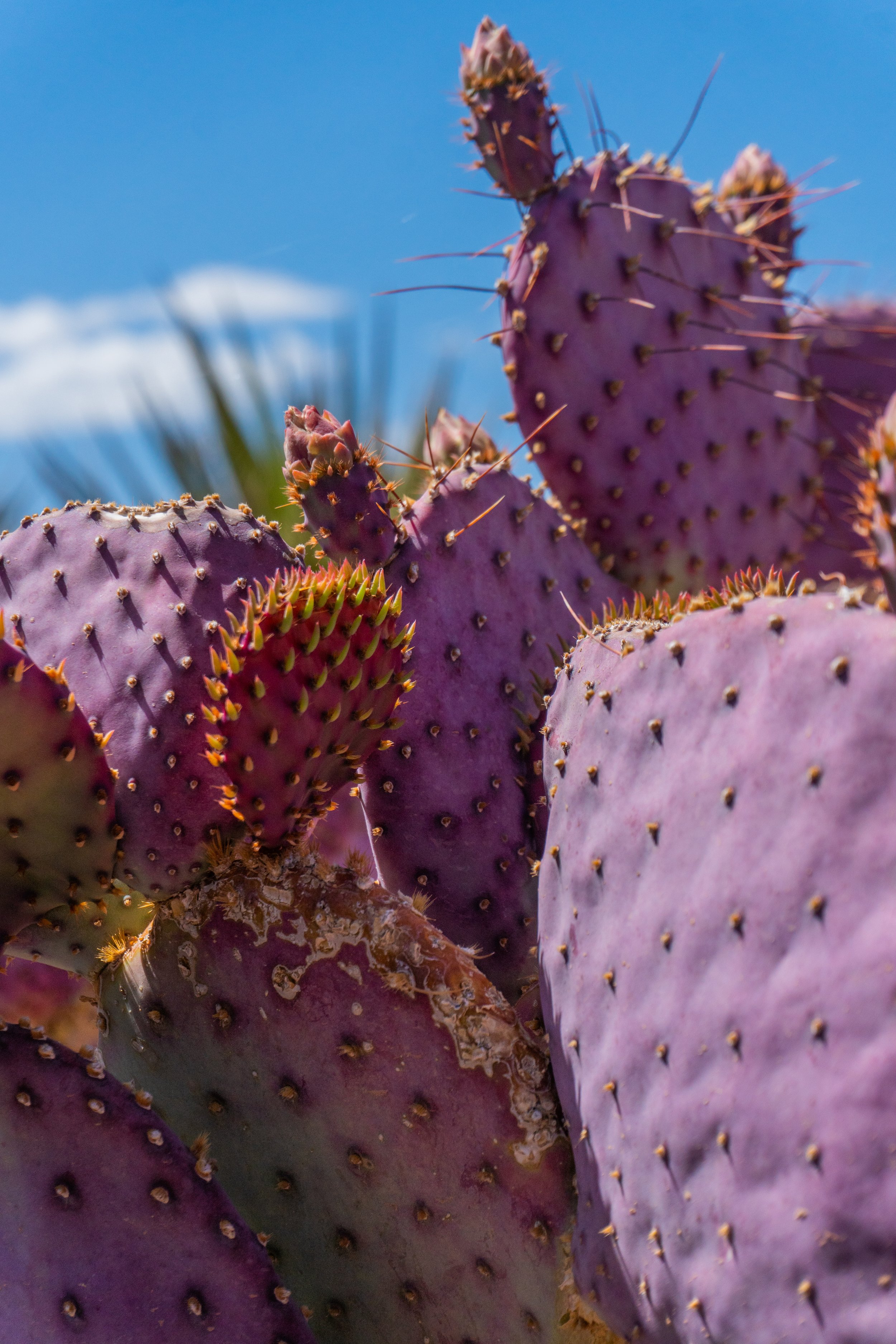 Image 2 of 6
Image 2 of 6

 Image 3 of 6
Image 3 of 6

 Image 4 of 6
Image 4 of 6

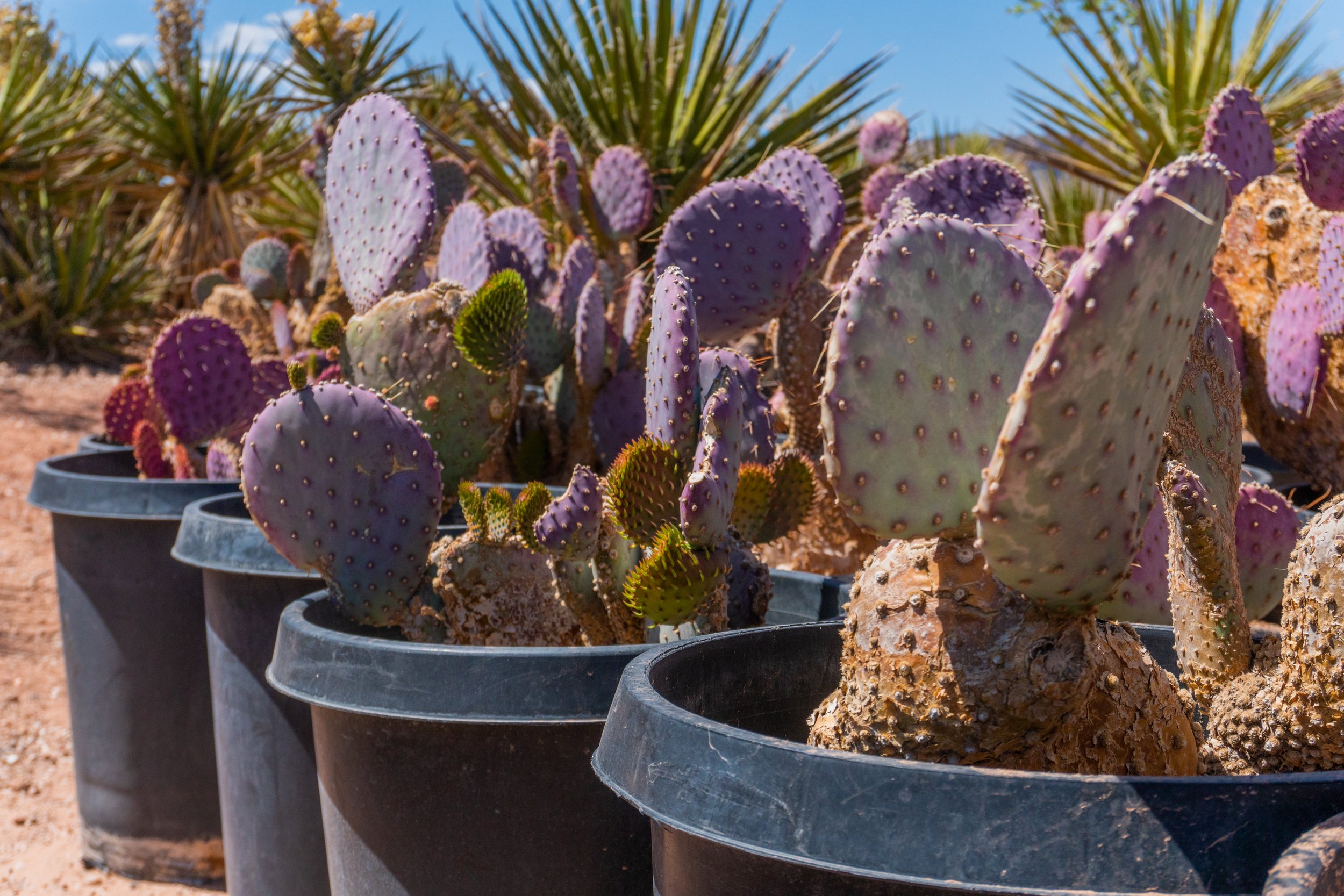 Image 5 of 6
Image 5 of 6

 Image 6 of 6
Image 6 of 6







Santa Rita Prickly Pear
The Santa Rita Prickly Pear Cactus, scientifically known as Opuntia santa-rita, is a breathtaking succulent that boasts a mesmerizing beauty, a rich historical background, and specific care needs that make it a valuable addition to any landscape. Its unique attributes and versatility make it an ideal choice for cactus enthusiasts and environmentally conscious gardeners alike.
The beauty of the Santa Rita Prickly Pear Cactus lies in its striking colors and distinctive form. The pads of this cactus species showcase a remarkable blend of purple and lavender hues that intensify under full sun exposure, creating a captivating display of color in any setting. As the cactus matures, it produces vibrant yellow flowers that contrast beautifully against the vivid purple pads, further enhancing its visual appeal. The Santa Rita Prickly Pear Cactus stands as an exquisite example of nature's artistry, adding a touch of elegance and charm to any landscape.
Beyond its aesthetic allure, this cactus holds a rich historical significance. Native to the southwestern United States and Mexico, it has been utilized by indigenous communities for centuries as a valuable source of food, medicine, and building materials. It played a crucial role in the survival and sustainability of these communities, serving as a testament to its resilience and adaptability in arid environments.
To ensure the optimal growth and well-being of the Santa Rita Prickly Pear Cactus, specific care requirements should be observed. This species thrives in well-drained, sandy or rocky soils, mirroring its natural desert habitat. It requires ample sunlight exposure to maintain its vibrant coloration and support healthy flower production. Like other desert plants, this cactus possesses exceptional drought tolerance, making it an excellent water-conserving choice for landscaping projects in regions with limited water resources.
By incorporating the Santa Rita Prickly Pear Cactus into your landscape, you not only embrace its captivating beauty but also support the preservation of a historically significant plant with unique ecological adaptations. Its ability to thrive in arid conditions contributes to sustainable gardening practices, promoting water conservation and environmental stewardship.
In conclusion, the Santa Rita Prickly Pear Cactus is a stunning and historically significant plant that adds a touch of natural beauty and sustainability to any landscape. Embrace the elegance of this remarkable succulent and experience how it transforms your surroundings into a vibrant and eco-conscious oasis. Let the Santa Rita Prickly Pear Cactus become a living testament to the harmonious connection between nature, culture, and responsible gardening practices.
The Santa Rita Prickly Pear Cactus, scientifically known as Opuntia santa-rita, is a breathtaking succulent that boasts a mesmerizing beauty, a rich historical background, and specific care needs that make it a valuable addition to any landscape. Its unique attributes and versatility make it an ideal choice for cactus enthusiasts and environmentally conscious gardeners alike.
The beauty of the Santa Rita Prickly Pear Cactus lies in its striking colors and distinctive form. The pads of this cactus species showcase a remarkable blend of purple and lavender hues that intensify under full sun exposure, creating a captivating display of color in any setting. As the cactus matures, it produces vibrant yellow flowers that contrast beautifully against the vivid purple pads, further enhancing its visual appeal. The Santa Rita Prickly Pear Cactus stands as an exquisite example of nature's artistry, adding a touch of elegance and charm to any landscape.
Beyond its aesthetic allure, this cactus holds a rich historical significance. Native to the southwestern United States and Mexico, it has been utilized by indigenous communities for centuries as a valuable source of food, medicine, and building materials. It played a crucial role in the survival and sustainability of these communities, serving as a testament to its resilience and adaptability in arid environments.
To ensure the optimal growth and well-being of the Santa Rita Prickly Pear Cactus, specific care requirements should be observed. This species thrives in well-drained, sandy or rocky soils, mirroring its natural desert habitat. It requires ample sunlight exposure to maintain its vibrant coloration and support healthy flower production. Like other desert plants, this cactus possesses exceptional drought tolerance, making it an excellent water-conserving choice for landscaping projects in regions with limited water resources.
By incorporating the Santa Rita Prickly Pear Cactus into your landscape, you not only embrace its captivating beauty but also support the preservation of a historically significant plant with unique ecological adaptations. Its ability to thrive in arid conditions contributes to sustainable gardening practices, promoting water conservation and environmental stewardship.
In conclusion, the Santa Rita Prickly Pear Cactus is a stunning and historically significant plant that adds a touch of natural beauty and sustainability to any landscape. Embrace the elegance of this remarkable succulent and experience how it transforms your surroundings into a vibrant and eco-conscious oasis. Let the Santa Rita Prickly Pear Cactus become a living testament to the harmonious connection between nature, culture, and responsible gardening practices.
